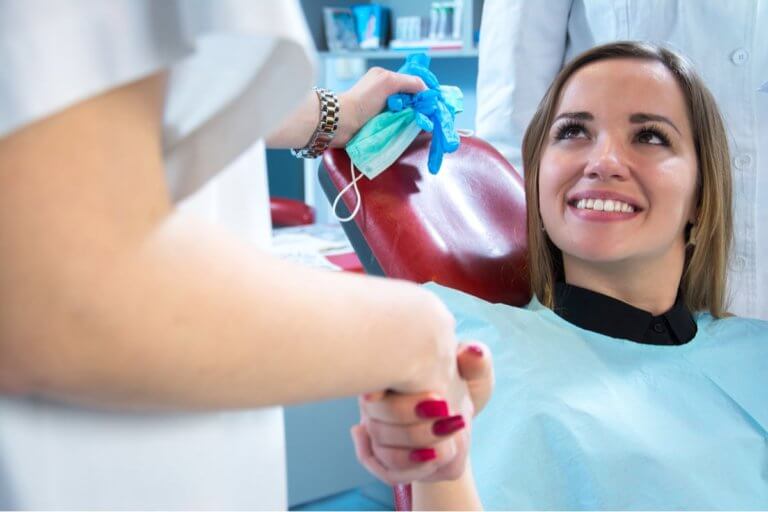We Are Partners
No, it’s not what you think. I did not bring a new dentist to partner with our practice. Instead, this is a phrase that I often use when I talk to a patient about periodontal care. Periodontal refers to the gums and bone which hold our teeth in our mouth. Together with cavities, gum, and bone health or the lack of it, are the primary reason that we lose our teeth. I have discussed the oral health partnership sentiment for years, and it wasn’t until recently that I heard it expressed to me.
Let me explain.
A Passive & Active Approach to Patient Health
I had the opportunity to visit an excellent health care professional for myself. During a somewhat intense workout with a trainer, I sustained an injury to my right shoulder. I sought help from Dr. Robert Truax, who is a board-certified Doctor of Osteopathic Medicine at the University Hospital Connor Integrative Health Network. After his diagnosis, he proceeded to use Osteopathic Manipulative Therapy to help my shoulder heal. When we finished, he directed me to a set of his videos on the internet as a guide for me to promote healing and good health.
Dr. Truax explained that he practices and advocates a passive and active approach for his patients.
The Passive Component
The passive component occurs when he manipulates those areas of the body that are need of treatment. I am passive during this phase as he is performing a therapy upon me.
The Active Component
When I leave him, I take an active role in my healing by doing specific exercises and stretches to aid my body to heal itself. He pointed out that dentistry is a phase of medical treatment which follows this model.
Passive & Active Oral Healthcare
The classic example of an oral health partnership in dental care is the treatment of gum disease.
First, my staff and I perform a specific procedure to remove or reduce the level of gum inflammation. This procedure is the passive component for the patient as he or she is the object of the process. The active part begins when the patient leaves the office. The home care, including brushing and flossing, allows the gums to heal completely and prevent a recurrence of the disease. Couple with intelligent nutrition guidelines creates an ironclad defense and barrier to prevent the return of the disease.
If I perform my procedure, and the patient doesn’t follow up, then the disease will return. If my patient does all the home care, but I don’t do my portion, the gum and bone disease do not depart. The dual actions are our passive and active components in my dentistry.
Committed to a Lifelong Oral Health Partnership
We are blessed in the United States with the most exceptional health care in the world. If there is an area that we fall short, it is our accepting responsibility for complementing this care with our personal trends that will reinforce and support this care. You know that my emphasis is on oral health, but this applies to all forms of healthy living.
If you are looking for a partner to help guide you in the right direction to creating the best oral health available for a lifetime, please call Megan at 440.951.7856 and make an appointment. I look forward to meeting you.
Jeffrey Gross, DDS, FAGD is an Ohio licensed general dentist and is on the staff of Case Western Reserve School of Dental Medicine.

